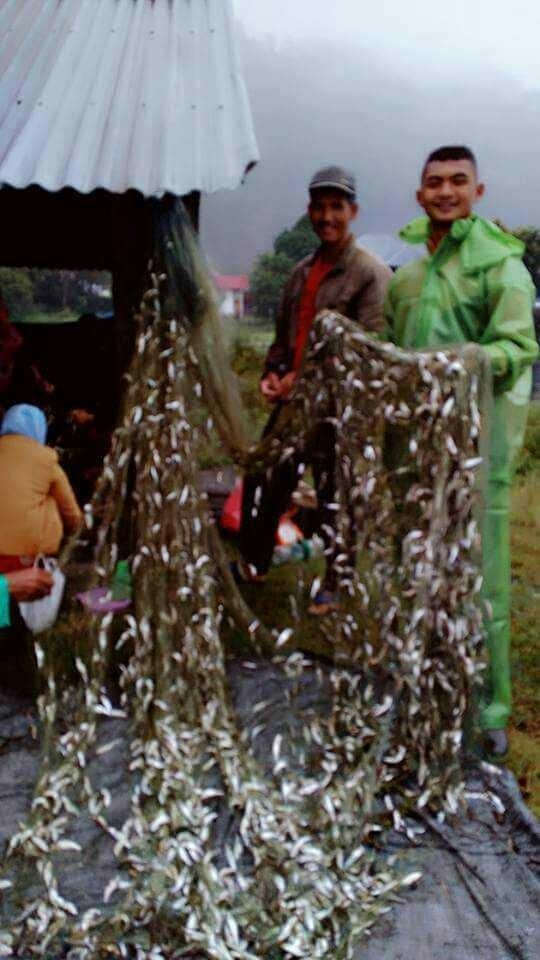
(rasbora tawarensis) is one of the endemic fish in Lake Laut Tawar. This fish is small, 8 cm long and 2 cm wide. Although small, this fish is very popular, in addition to the taste is very tasty, the aroma will remind people of the uniqueness of Lake Laut Tawar Aceh Tengah.
The nomads who had settled in the Gayo Highlands often missed the silver fish. The proof, they are willing to pay dearly for 1 kilogram order dried fish depik. In fact, when returning home, they deliberately came to Takengon fish market, specifically to find fresh fish depik.
Unfortunately, upon arrival at the Takengon Fish Market, the conditions are quite different. They did not find a canoe containing fresh depot fish like the 1970s. There are only found depik fish sold in plastic bucket. The fish is the catch of fishermen using nets (doran-Gayo language). Character, the head and body of the fish that many have been damaged.
In addition, the fish in the bucket was not all contain fish depik. Although the physical appearance is very similar, but most have been mixed with fish relo (rasbora sumatrana), close relatives of fish depik. One way to know which fish depik and mana fish relo, from the scent and body. The scent of depik fish is very distinctive, not rancid, and its body is soft.
Cut the migration path
Tersebutlah Pak Yusuf Mahmud (72), Bireuen-born man, alumni of SMAN 1 Takengon in 1964. Every visit to Takengon, the old man living in Pekan Baru Riau would wander to the Fish Market on Jalan Peteri IjoTakengon. The goal is to buy captured fish depikes.
He remembered the wonderful times of living in Takengon. At that time, fish depik was very easily purchased. In the morning, the fishermen have lined up "parked" the canoe of fish depik at the fish landing site, on the edge of Sungai Pesangan. Dozens of canoes containing depik fish that spread the distinctive aroma of fish depik ber-pire (contains eggs). The aroma that makes Pak Yusuf Mahmud can not forget the city of Takengon.
Era changed, times changed. Millenium era helped change the pattern of fishermen in catching fish depik. They are getting smarter, fishing gear is available in large quantities on the market. Fishermen are no longer waiting for depik fish in the final destination of their migration (didisen). Fishermen prefer to bypass the migration path of this endemic fish.
The trick, the net is spread longitudinally from east to west. What are the consequences? The depik fish containing the ready-to-spawn eggs is trapped in a net before reaching the spawning destination. As is known, the location of this fish spawning destination is a number of springs that are widely found on the north side of Laut Laut Laut Marine